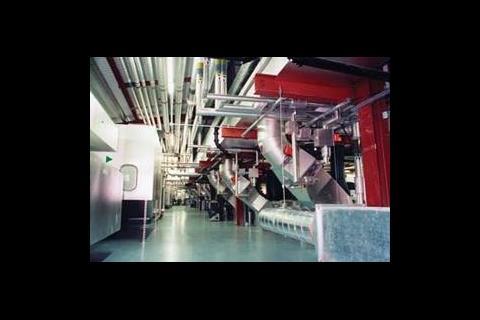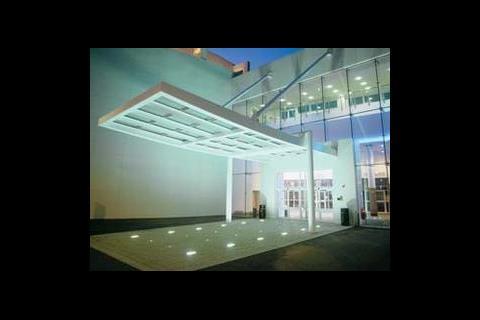It is now accepted that there are four main global environmental issues: global warming; non-renewable resource depletion; toxic pollution; and ozone depletion. The first three are arguably the same issue, as the burning of fossil fuels for energy forms the greatest contribution to global warming – CO2 emissions from combustion; non-renewable resource depletion (fuel extraction;) and toxic pollution (emissions to air and water from extraction, processing and combustion).
The key to sustainability is, therefore, to reduce the use of this form of energy to a minimum and to cease the use of ozone depletants. This is one of the main conclusions of a new report Insulation for sustainability written by sustainability consultants XCO2 Conisbee. This was also a strong message which came out of September's joint CIBSE/ASHRAE conference in Edinburgh.
Observers have argued that, in the face of this challenge, our response should be to invest in clean renewable sources of energy. However, the switch to sun, wind and water to power our energy-hungry civilisation is slow in coming. What's more, it is intensive in capital as recent Government announcements demonstrate.
One has to be pragmatic and understand that there is absolutely no point in over-investing in renewable power generation which would not be required if we could achieve more efficient use of energy.
So, while we are developing capacity in these alternatives, we also need to look at ways of making a more immediate and easily achievable impact on our levels of energy consumption.
We will then get to the position where we have to invest the minimum possible (in capital, land and aesthetic terms) in order to move our economy into a low carbon future.
The Government is now clearly serious about renewable power generation, but what about consumption reduction? The Energy White Paper published earlier this year, which set the scene for more recent announcements on investment in renewable generation, also made a great effort to highlight programs to reduce energy demand.
About half of non-renewable fuel use is for the heating and increasingly the cooling of buildings. The rest is for transport, industry and appliances, all of which are outside the immediate interest of these pages.
The White Paper had a number of specific programmes focussed on how we can make our buildings more energy efficient. Insulation has a key, though not exclusive, role to play.
For insulation to play a truly effective role, however, it is important to recognise the full scope of its potential, and not to neglect areas that could have a positive impact on reducing CO2 emissions.
For example, the focus in most projects is on increasing fabric insulation. Indeed the last changes to Approved Documents L1 and L2 of the Building Regulations in England & Wales and Technical Standard J in Scotland made swingeing changes to fabric insulation. But what about the miles of pipes and ducts providing energy and services to these buildings? Arguably, there was little or no practical change. In England & Wales, the environmental thickness outlined in the new BS 5422: 2001 (table 1) – the standard giving thicknesses of insulation products for pipes and ducts in different applications – were written into the documents as a possible route to compliance.
However, the word from the market is that many contractors are ignoring the new version of BS 5422 in favour of the outdated version and that building control officers are ignorant of the difference. This effectively has left a big loophole in the law. In Scotland the new British Standard didn't make an appearance at all.
Part L of the Building Regulations in England & Wales is due to change again in 2005 and we can only hope that building services insulation is not ignored again. It is just as important to insulate pipe and ductwork as it is the main fabric of the building, but it is not always treated as a priority in spite of the potential effectiveness of insulation in reducing energy loss through this area.
One small step
Installing insulation to pipes, ducts and vessels used in the provision of space heating and cooling and hot water supply, to the standards required in BS 5422: 2001 or better, will do more than achieve compliance with regulations and standards. It is also a small individual step towards global environmental sustainability that every engineer can make.
Accepting the required standard, there are a few other choices to make. Insulation material is one. For cold, chilled or hot (up to +120°C) water pipework, and for air-supply ductwork, the two most often used insulation materials are mineral fibre (glass and rock) and rigid phenolic insulation.
On the face of it, there is little to chose between them. For example, the fire and smoke performance of the two products is equivalent. However, phenolic probably has the edge because it is thinner for equivalent heat loss/gain (as it has far a superior thermal performance). Also, phenolic isn't a skin irritant.
Looking long-term
However, engineers must look to the long-term, and examine the thermal performance of these products over their lifetime use. This is one of the key messages of the Insulation for sustainability report. It identifies that mineral fibre products are at risk from water, which, if it gets into the matrix of the product, can reduce its thermal effectiveness by 50% or more. Half as effective means twice the heat loss/gain, twice the fossil fuel used and an installation that is only half as sustainable as it could be. Or, in our low carbon future, twice the number of wind turbines, and twice the capital investment required.
You may ask where water infiltration might originate. Unfortunately, few chilled or cold pipe installations, or below ambient air-supply ducts, have a perfect guaranteed-for-life vapour barrier. How many of you have seen condensation on pipes and ducts with wet mineral fibre lagging?
Insulation for sustainability states clearly that cellular plastic insulation materials such as rigid phenolic insulation have limited or no risk of thermal failure.
That addresses the first three environmental issues by reducing energy use. But what about ozone depletants? There is little point in redressing one global environmental issue if, in doing so it exacerbates another. One of the factors behind the very high levels of thermal efficiency of rigid phenolic insulation products has historically been the effectiveness of the hcfc blowing agents used in their manufacture. HCFCs are ozone depletants, however, in accordance with the Montreal Protocol, all hcfcs are being phased out of use by the end of this year. They will be replaced by less harmful and slightly less effective blowing agents.
As a result of this change, there will be a slight adjustment to the performance of rigid phenolic insulation products, and the thickness specified will, in some cases, need to be increased to compensate for this. However, the thicknesses of the new zero ozone depletion potential (odp) rigid phenolic insulation products required by BS 5422: 2001 will still be significantly less than mineral fibre as table 1 demonstrates.
It is important to note this increase in thickness when specifying for future projects, and to maintain awareness of the impact of environmental issues on the construction industry as a whole.
These legislative changes provide the crucial framework around which we can start to build a sustainable future. And they will also enable building services engineers to make some quick wins, using a relatively simple technology, in the fight against rising CO2 levels.
The two-fold benefit of increased energy efficiency, and the elimination of ozone depleting gases is an achievable target.
High-performing, zero odp insulation can provide the year on year savings in fossil fuel use that make sustainability possible, while we make that final move to clean, renewable energy sources.
Source
Building Sustainable Design
Postscript
John Garbutt is head of marketing at Kingspan Insulation, tel: 01544 387 210























No comments yet